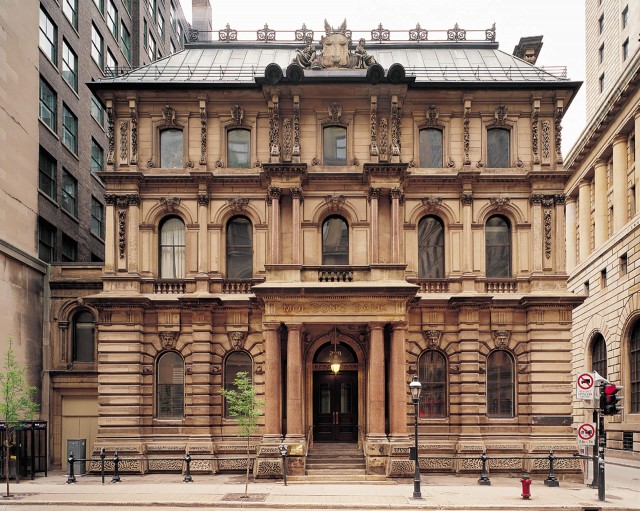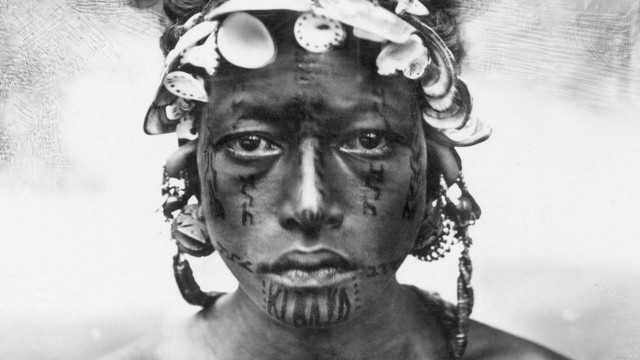Previous exhibition
November 2nd, 2004 — April 24th, 2005
Old Montréal in a New Light
Over 30,000 workers walk along its streets every day, 3,000 people call the district home and millions more visit it every year. Residents, shopkeepers, workers, tourists and just plain visitors stroll the streets of this one square kilometre of history known as Old Montréal. But how many of them stop to examine all the clues to the rich heritage of this historic district, one of North America's most important heritage ensembles? That is just what visitors will find in Old Montréal in a New Light.
The exhibition focuses on buildings, urban sites, objects and interiors to help visitors decipher and understand the past of this unique district. The exhibition offers much more than a simple chronological analysis. In the exhibition hall, the visitor is taken on a stroll through the old city. Photos of urban sites and buildings from a variety of eras, early books on Old Montréal, profiles of historic figures, objects from long ago, urban furniture and an enormous, ingenious photo montage are used to showcase the historic quarter in a new light.
The visitor walks past buildings that embody several distinct historical periods and down streets lined by buildings dating from different periods. The contemporary treatment given to the exhibition doesn't stop at the doors of the Museum, either. Pointe-à-Callière has designed a number of suggested tour routes through the streets of Old Montréal, so that visitors can explore its splendid historical and architectural heritage.
A photo gallery
One of the highlights of the exhibition is the series of oversize copies of photos taken by Normand Rajotte for Old Montréal: History through Heritage, recently published by Les publications du Québec under the direction of Gilles Lauzon, of the Société de développement de Montréal, and Madeleine Forget, of the Ministère de la Culture et des Communications. This book, packed full of historical details and illustrations, was the inspiration for this exhibition.
The different historical layers of Old Montréal are illustrated with a series of photos of the façades and interiors of old buildings, arranged to form a square installation, over 2 metres tall, suspended in the centre of the room. Visitors can stroll through this structure and discover the various layers of the city's archaeological heritage and see how the different faces of Old Montréal are superimposed one atop the other. There is also a spectacular panorama of present-day Old Montréal, taken from the roof of Pointe-à-Callière, the city's birthplace.
Montréal past and present
The exhibition opens with a look at two key initiatives that shaped Old Montréal. The first is a plan showing the 17th-century town's original street grid. The plan, dating from 1672, was drawn by François Dollier de Casson, the superior of the Montreal Sulpicians, who were once the Seigneurs of the Island of Montréal. The second item in this introductory zone is the plan drawn up in 1717 by Gaspard-Joseph Chaussegros de Léry, Engineer to King Louis XIV. His mission was to surround the town with a high, wide stone wall, punctuated with gates and observation posts. Visitors to the exhibition can compare these two historical depictions of the town as it was then with the face of Old Montréal today and see the many similarities. Montréal's first downtown starting in the mid-19th century, present-day Old Montréal is bounded on the west by Sœurs-Grises and Longueuil streets, on the east by Saint-Hubert Street, on the north by Saint-Antoine Street and, on the south, by De la Commune.

Open for business
A crossroads of peoples and an economic hub, the dream of a handful of French colonists, a fortified town and then a conquered one, a great business centre: all these realities made Old Montréal what it is today. The exhibition examines the city's past from the angle of its history, architecture and archaeology. From bartering to the fur trade and the rise of powerful banks, trade and business shaped the face of Old Montréal. The majestic bronze doors of the first head office of the Royal Bank, erected on St. James Street in 1907-1908, are displayed as a tangible reminder.
Some clues to help visitors deciphers old Montréal's heritage
The exhibition also provides visitors with tools allowing them to date buildings in Old Montréal to the right periods. Architectural styles and windows, for instance, are valuable clues that they will learn to decipher as they explore the exhibition. The windows of Old Montréal alone have many stories to tell. A number of interesting and typical examples are contrasted and compared, from the small panes dating back to the French regime (fragments of which archaeologists still turn up at many sites in the district!) to the enormous show w
indows from the British period. Visitors will even get to see a number of never-before exhibited artifacts, like the superb stained glass found in the basement of the Notre-Dame-de-Bon-Secours Chapel. The exhibition also looks at how the architectural landscape of Old Montréal was repeatedly ravaged and transformed by fire, right up to the mid-19th century. While it caused terrible and irrecoverable losses, it also influenced the way the city was built.
Heritage pioneers
The exhibition introduces visitors to four great Montrealers who shared a passion for their city's historical and architectural heritage. At different times, all four worked in their own ways to develop and safeguard Old Montréal. Jacques Viger (1787-1858), a former bridges and roads inspector, was Montréal's first Mayor and the first President of the city's historical society, the Société historique de Montréal. Alfred Sandham (1838-1910), a telegraph operator with the Grand Trunk Railway, was responsible for bringing the YMCA to Montréal and penned several guides to the city's charms. Victor Morin (1865-1960), a notary and municipal alderman, headed up plans to open Saint-Laurent Boulevard down as far as the St. Lawrence. And Eric McLean (1919-2002), a music critic for the Montreal Star and The Gazette, was among the first to call for all of Old Montréal to be preserved, back in the 1950s.

